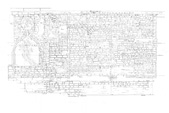Masons at Work
Karin Uetz
Technische Universität München

Karin Uetz
Technische Universität München
A Close Look at the 11th Century Cross-Domed Church of St. Mark's, Venice
When in 1063 the Venetian government began to rebuild St. Mark's Church, it declared to aim at copying the Church of the Holy Apostles of Constantinople. The new church rose on the site of a predecessor, which was erected in 828 to host the relics of the Evangelist brought to Venice from Alexandria. Despite the example of Holy Apostles', the 11th century plan of St. Mark's was largely conditioned by the pre-existing church and other nearby structures. Our 3-years archaeological campaign on the standing building aimed to gain new information on the early building history of St. Mark's, the medieval alterations and the 19th century replacements. Current restoration works on the northern side of the church enabled to see many walls usually covered by marble decoration or mosaics. The field work was accompanied by studies in the well provided St.-Mark's building archive. New evidence could be gathered on specific solutions in designing structural and functional connections between the cross-domed 11th century building and the also Byzantine-imprinted adjoining church of St. Theodore, dating from the 9th century. In 11th–12th century narthex of St. Mark's we learnt how a first generation of Byzantine-schooled masons passed their knowledge to a following one of local workers that created new technical solutions for the necessities of vaulting.


